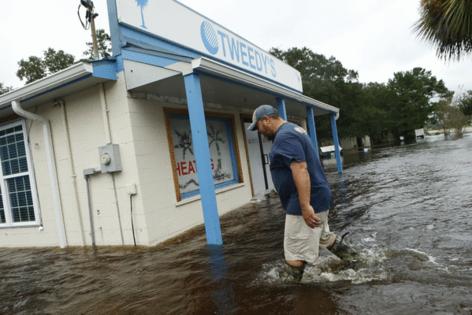South Carolina may face above-normal hurricane season in 2024, new NOAA forecast shows. Here's how many storms
Published in News & Features
There could be 25 named storms during the 2024 Atlantic hurricane season — the most federal forecasters have ever predicted and a warning shot for South Carolina and other Southeastern states.
The National Oceanic and Atmospheric Administration predicted an above-normal hurricane season on Thursday, with between 17 and 25 total named storms.
The record number of storms predicted by NOAA in a preseason outlook had previously been 14 to 23 named storms in 2010. An average year has about 14 tropical storms, seven of which become hurricanes. The record for most actual named storms in a season is 30, which was set in 2020.
Hurricane season begins June 1 and lasts through Nov. 30.
The 2023 hurricane season ended as the fourth busiest for most-named storms. It had 20 named storms, seven of which became hurricanes, such as Hurricane Idalia, which flooded parts of South Carolina, including Charleston.
Hurricane season 2022 had 14 named storms, including Hurricane Ian, which, after plowing through Florida, landed around Georgetown, South Carolina in September with sustained winds of 85 mph, caused coastal flood damage and destroyed several large piers near Myrtle Beach.
The 2024 hurricane season forecast calls for an 85% chance of an above-normal season, a 10% chance of a near-normal season and a 5% chance of a below-normal season.
NOAA is forecasting with 70% confidence of 17 to 25 total named storms with winds of 39 mph or higher. Of those, eight to 13 are forecast to become hurricanes with winds of 74 mph or higher. Those could also include four to seven major hurricanes (Cat 3-5) with winds of 111 mph or higher.
There are several factors why the Atlantic hurricane season is expected to be more intense than usual, such as the near-record warm ocean temperatures in the Atlantic Ocean, development of La Niña conditions in the Pacific, reduced Atlantic trade winds and less wind shear, NOAA states.
“Severe weather and emergencies can happen at any moment, which is why individuals and communities need to be prepared today,” FEMA Deputy Administrator Erik A. Hooks said in a Thursday news conference. “Already, we are seeing storms move across the country that can bring additional hazards like tornadoes, flooding and hail. Taking a proactive approach to our increasingly challenging climate landscape today can make a difference in how people can recover tomorrow.”
The new NOAA predictions are fairly in line with forecasts made by Colorado State University researchers earlier this month. Their forecast calls for 23 named storms for the season, the highest amount they’ve ever predicted.
Of the 23 named storms predicted this year, the researchers expect 11 to become hurricanes and five to reach major hurricane strength (category 3-5), with sustained winds of 111 mph or greater. The team also predicts that hurricane activity this year will be about 170% of the average season from 1991-2020. In comparison, hurricane activity in 2023 was about 120% of the average season, the researchers say.
©2024 The State. Visit thestate.com. Distributed by Tribune Content Agency, LLC.







Comments